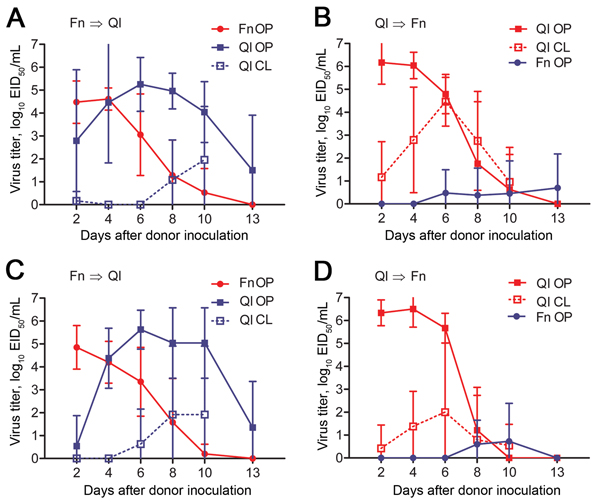Volume 21, Number 4—April 2015
Research
Influenza A(H7N9) Virus Transmission between Finches and Poultry
Figure 3

Figure 3. Waterborne transmission of virus between birds in an interspecies study of influenza A(H7N9) virus transmission. Finches (n = 10) and quail (n = 6) were inoculated with influenza virus strain A/Anhui/1/2013 (H7N9) (A, B) or A/chicken/Rizhao/867/2013 (H7N9) (C,D) and paired with naive birds in an environment in which physical contact was prevented but water was shared (Figure 1, panel A). Swab samples were obtained from birds every 48 h, and virus titers were determined in embryonated chicken eggs. Data are the average titer per time point ± SD. Directionality of transmission (i.e., infected→naive) is indicated in the top left of each panel. Red indicates infected animals; blue indicates naive animals. EID50, 50% egg infectious dose; Fn, finch; QI, quail; OP, oropharyngeal swab sample; CL cloacal swab sample.